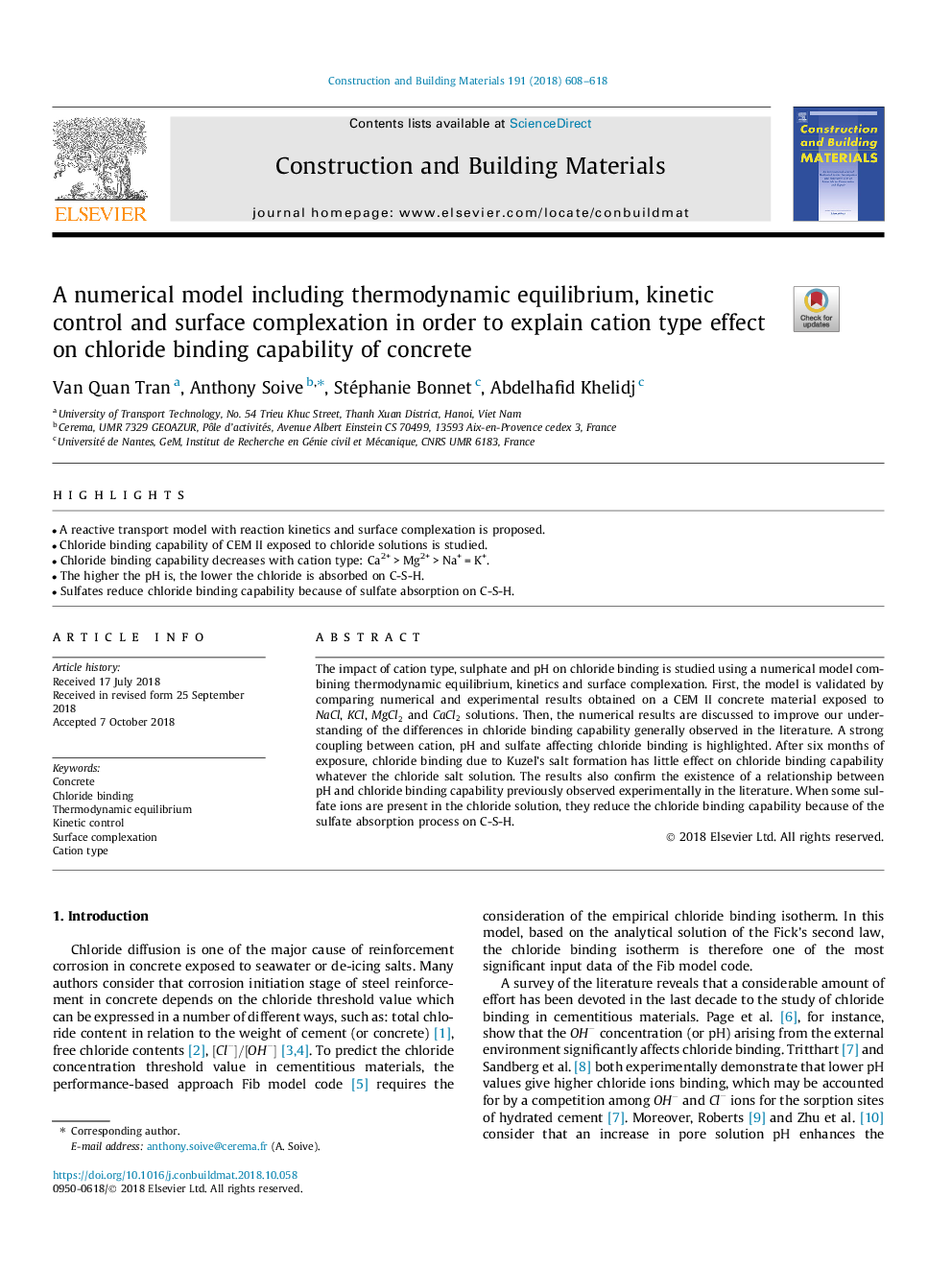| کد مقاله | کد نشریه | سال انتشار | مقاله انگلیسی | نسخه تمام متن |
|---|---|---|---|---|
| 11263031 | 1798144 | 2018 | 11 صفحه PDF | دانلود رایگان |
عنوان انگلیسی مقاله ISI
A numerical model including thermodynamic equilibrium, kinetic control and surface complexation in order to explain cation type effect on chloride binding capability of concrete
ترجمه فارسی عنوان
یک مدل عددی از جمله تعادل ترمودینامیکی، کنترل جنبشی و کمپلکس سطح به منظور توضیح اثر نوع کاتیون در کلرید اتصال قابلیت بتن
دانلود مقاله + سفارش ترجمه
دانلود مقاله ISI انگلیسی
رایگان برای ایرانیان
کلمات کلیدی
بتن، اتصال چرخه، تعادل ترمودینامیکی، کنترل جنبشی، پیچیدگی سطح، نوع کاتیون،
موضوعات مرتبط
مهندسی و علوم پایه
سایر رشته های مهندسی
مهندسی عمران و سازه
چکیده انگلیسی
The impact of cation type, sulphate and pH on chloride binding is studied using a numerical model combining thermodynamic equilibrium, kinetics and surface complexation. First, the model is validated by comparing numerical and experimental results obtained on a CEM II concrete material exposed to NaCl, KCl, MgCl2 and CaCl2 solutions. Then, the numerical results are discussed to improve our understanding of the differences in chloride binding capability generally observed in the literature. A strong coupling between cation, pH and sulfate affecting chloride binding is highlighted. After six months of exposure, chloride binding due to Kuzel's salt formation has little effect on chloride binding capability whatever the chloride salt solution. The results also confirm the existence of a relationship between pH and chloride binding capability previously observed experimentally in the literature. When some sulfate ions are present in the chloride solution, they reduce the chloride binding capability because of the sulfate absorption process on C-S-H.
ناشر
Database: Elsevier - ScienceDirect (ساینس دایرکت)
Journal: Construction and Building Materials - Volume 191, 10 December 2018, Pages 608-618
Journal: Construction and Building Materials - Volume 191, 10 December 2018, Pages 608-618
نویسندگان
Van Quan Tran, Anthony Soive, Stéphanie Bonnet, Abdelhafid Khelidj,
